
The School of Engineering’s 2025 Hazeltine Innovation Awards, grants to underwrite early-stage faculty research projects with the potential to attract external funding and create a lasting broadbased impact, have been awarded to principal investigators Lucas Caretta, Benjamin Kimia, Arto Nurmikko, Kimani Toussaint, and Monica Martinez Wilhelmus.
The awards, established in 2023 and presented annually, aim to spur bold and innovative research that is transformative, impactful, and has the potential to significantly advance a field; to lead to creative and revolutionary approaches to STEM education and/or development of a diverse and inclusive workforce; or catalyze new knowledge and discoveries through purchasing or development of new instrumentation or equipment. The goal is to enable faculty and their student researchers in the most exciting and important areas of innovation and discovery.
The Hazeltine Innovation Awards were established by alumnus Aneel Bhusri ’88 and named after engineering’s beloved professor emeritus Barrett Hazeltine, who joined the Brown faculty in 1959 and is best known for his classes in management and entrepreneurship that have helped to launch countless careers in business and nonprofit leadership. “ENGN9: Management of Industrial and Nonprofit Organizations,” which Hazeltine has taught for more than 40 years, remains one of the most popular courses at the University.
The following one-year projects were accepted for funding this year:
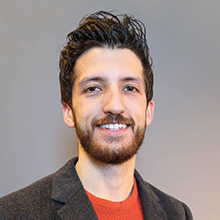
Enhancing Emergent Magnetoelectricity in Ultrathin Oxides (Principal Investigator Howard M. Reisman Assistant Professor Lucas Caretta)
The proposed research aims to overcome the fundamental challenge of suppressed magnetoelectric coupling in ultrathin complex oxide materials, which currently limits their application in low-power, scalable computing technologies. Ultrathin oxide films, such as multiferroic BiFeO3, typically lose functional properties like ferroelectricity and magnetism below a critical thickness due to depolarizing fields, structural defects, and stoichiometric limitations. This research leverages innovative hybrid pulsed laser deposition techniques that enable atomically precise growth of complex oxides down to a single-unit-cell thickness, achieving unprecedented structural and compositional fidelity.
Caretta’s lab proposes novel epitaxial design strategies, specifically applying high compressive epitaxial strain and short-circuit boundary conditions, to stabilize and manipulate magnetoelectric order at ultrathin dimensions. This targeted control combats traditional limitations, maintaining robust polarization and magnetism even at extreme thinness. By using advanced characterization techniques including atomic resolution microscopy, nitrogen vacancy magnetometry, x-ray linear dichroism, and ferroelectric measurements, this work will provide critical insights into the fundamental scaling limits of magnetoelectric phenomena. Ultimately, outcomes from this study could address the escalating energy consumption and sustainable computing technologies associated with conventional microelectronics.
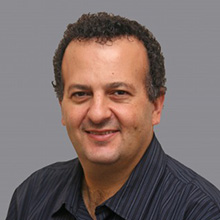
AI-Driven Enhancement of Minimally Invasive Surgery Using Computer Vision: A Pilot Study in Field-of-View Expansion (Principal Investigator Professor Benjamin Kimia, with co-Investigators Professor Francois Luks, Professor Erik Dutson (UCLA), Assistant Professor Andrew Luhrs, and Assistant Professor Marcoandrea Giorgi)
Minimally Invasive Surgery (MIS) is a widely adopted alternative to traditional open procedures for abdominal and pelvic interventions, offering numerous advantages such as reduced infection risk, trauma, anesthesia requirements, hospitalization time, and cost. MIS is performed through small incisions using specialized instruments and a camera, with the abdomen inflated using carbon dioxide gas to create operative space. Despite its benefits, MIS presents persistent challenges — most notably limited depth perception and reduced spatial awareness due to a narrow field of view (FOV).
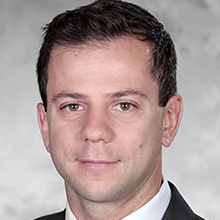
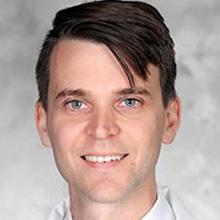
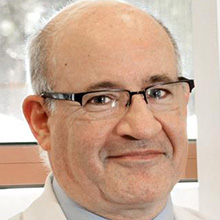
This pilot project initiates a larger research effort to address these challenges through artificial intelligence (AI), specifically leveraging computer vision to enhance intraoperative imaging and spatial understanding. The overarching goal is to apply AI techniques to develop endoscopic odometry, organ surface estimation, and FOV augmentation.
The focus of this initial study is the development of a novel AI-enabled image acquisition and synthesis approach using a standard 30-degree laparoscope. By rapidly rotating the device and applying AI-based image compositing, we aim to generate a single composite view that combines high-resolution imaging of the central surgical area with low-resolution context from the periphery. This AI-driven visualization technique is expected to significantly improve surgeons’ spatial awareness, reduce cognitive burden, and enhance overall surgical outcomes.
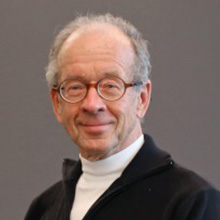
High-Speed Single-Photon Camera for Imaging and Tracking Under Low Light (Principal Investigator L. Herbert Ballou University Professor Arto Nurmikko)
Nurmikko’s N3 Lab has been granted funds to acquire a high-speed single-photon counting camera (SPAD by Pi Imaging Inc). The camera represents a generational shift in photoimaging, capable of operating under very low light level conditions (order of 1 lux) yet able to image and track dynamical events at very high speeds (kHz frame rates). The SPAD sensor is a 512x512 array of silicon avalanche photodiodes and operates across the visible and near infrared spectrum. Each individual pixel has speed below 100 picoseconds which, applying an ultrafast global shutter, makes sub-nsec time-resolved high-resolution imaging possible. A time-gating function enables a LIDAR (light detection and ranging) mode for 3D-reconstruction of targets.
The camera offers opportunities to advance research in several engineering areas of the School of Engineering. A primary application in the PI’s laboratory for the proposed SPAD equipment is solving the problem of dynamical imaging of moving objects under conditions of significantly impaired visibility such as in nighttime driving in a fog. A secondary application is the use of the SPAD camera in imaging dynamical processes such as label-free hemodynamics of neural activity. Elsewhere, the camera will be made available to other colleagues in the School of Engineering. More broadly, the camera can benefit molecular biology research via rapid FLIR (fluorescence lifetime imaging).
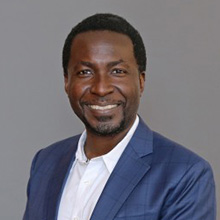
The BREADTH Scholars Program (Principal Investigator Thomas J. Watson, Sr. Professor of Science Kimani C. Toussaint, Jr., with co-Investigators Assistant Professor Peipei Zhou, Associate Professor Haneesh Kesari, and Professor Benjamin Kimia)
In recent years, there has emerged a general sentiment that the future of healthcare is one where an integration of advanced sensors, which can be embedded into the built environment (e.g., home) or worn on the body, combined with artificial intelligence (AI) will lead to on-demand, non-invasive diagnostic assessment of an individual’s health. This view has fueled the hope that such digital health technologies (DHTs) could facilitate the delivery of quality healthcare to anyone, anywhere, and at any time. It has also accelerated the commercialization of DHTs, particularly in the form of smart watches, rings, and other wearables. Furthermore, the landscape for DHTs is extremely broad, ranging from AI-powered mobile apps to emerging advances with neuroprosthetics to novel wearables that capture multimodal biometric data.
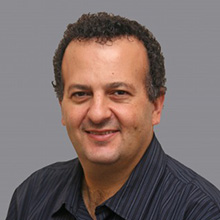
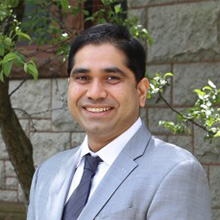

In order to realize this future, it will be important to cross-train the next-generation of engineers in topic areas that are important to the integration of DHTs into a future smart environment for health monitoring. These engineers will need to develop reasonable technological literacy in AI hardware and algorithms, a variety of sensor types, wireless communication protocols, and methods from design (e.g., user interface and experience). The Brown University Researchers Engineering Advances in Digital Technologies for Health (BREADTH) program will cross-train a cohort of Sc.M. engineering students in select foundational areas that are important to the DHT landscape. This work will inform the future development of an Sc.M. concentration area in the School of Engineering, as well as the creation of an SoE Health Innovation Technology Sandbox to promote DHT development, testing, and interdisciplinary collaborations. BREADTH will focus on training in optical sensors, AI-enabled embedded computing platforms, computer vision, and kinematic sensors.
The interdisciplinary team is rounded out by collaborators Beth Altringer Eagle, Louise Manfredi, and Megan Dansby Russell.
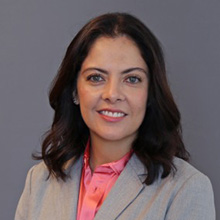
The Physics of Breastfeeding: An Experimental Fluid Dynamics Approach to Improving Maternal and Neonatal Health (Principal Investigator Monica Martinez Wilhelmus)
Breast milk provides optimal nutrition for infants, yet many women face challenges such as pain and low milk flow that prevent sustained breastfeeding for the recommended six months. While clinical and laboratory studies have elucidated key aspects of how breastfeeding biomechanics impacts milk expression, the inherent role of the rheological properties of milk within the anatomically complex ductal network still needs to be characterized. This gap limits the ability to fully explain or prevent common pathologies such as ductal clogging and pain.
Wilhelmus’ comprehensive framework includes experimental and computational approaches to evaluate how milk rheology and ductal morphology impact milk circulation through the breast during feeding. A systematic rheological characterization of breast milk samples will be conducted to inform the design of a novel soft physical breast analog and non-Newtonian milk simulant for direct flow visualization within anatomically accurate ductal networks under a range of clinically relevant conditions. Experimental data will inform high-fidelity computational fluid dynamics (CFD) models to explore a broad parameter space of fluid properties, duct geometries, and pumping dynamics. By characterizing the fundamental physics governing milk transport during breastfeeding, this work aims to generate predictive insights into milk expression volumes and the sources of common breastfeeding pathologies. The findings will inform evidence-based clinical practices, guide the design of improved lactation aids (such as breast pumps), and ultimately support maternal-infant health by addressing key barriers to successful breastfeeding.